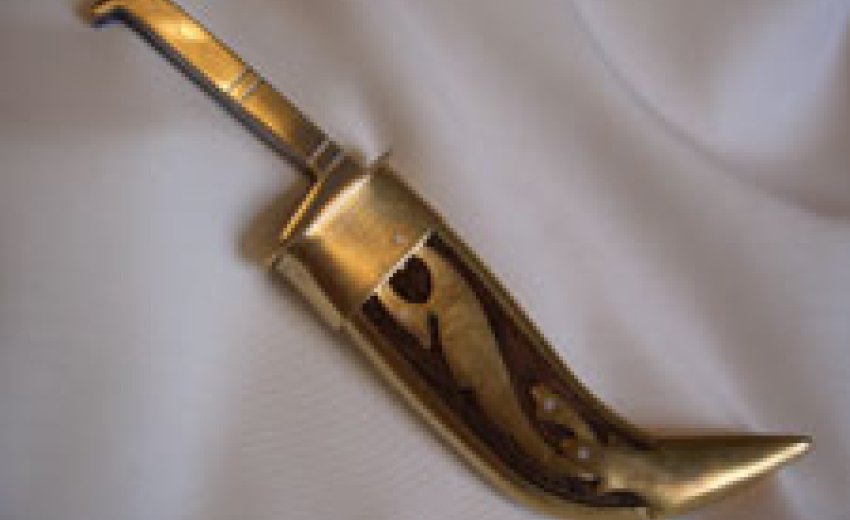HENRY AUBIN, The Gazette
Published: Tuesday, September 16
The controversy over the kirpan is back. Police say a 13-year-old Sikh boy last week used a religious dagger to threaten another student outside a school in Montreal. Police say the knife was wrapped in cloth at the time. No one was injured.
What was hurt, however, was the case for allowing Sikhs to take the symbolic weapon to school. The Supreme Court of Canada upheld that right in 2006.
The kirpan was hugely influential in the whole debate over the accommodation of cultural differences. In its report last May, the Bouchard-Taylor commission on reasonable accommodations noted that the Supreme Court's decision had "contaminated" that debate and also "discredited the courts." Indeed, an SOM poll in La Presse a year ago suggested that an overwhelming 91 per cent of Quebecers opposed the court-sanctioned right of young Sikhs to wear the bladed object to class.
Does the wearing of the ceremonial dagger, seen by many Sikhs as a purely symbolic weapon in the fight against evil, compromise public security? That question has dominated each of the many deliberations on the kirpan.
Administrators at L'École Ste. Catherine Labouré reached an agreement in 2001 with the parents of a 12-year-old boy, Gurbaj Singh Multani, to let him wear the dagger if it were sewn into his underclothing to impede impulsive removal. The school's governing board then reversed the decision, banning the object. When the Marguerite Bourgeoys School Board upheld that ruling, the parents went to Quebec Superior Court: That court said the boy could wear the knife so long as he kept it in a cloth envelope under his shirt.
The Quebec Court of Appeal overturned that. It said that barring the kirpan contravened the Charter of Rights' guarantee of religious freedom, but it said the question of safety made the ban reasonable.
What's significant in light of last Thursday's incident is the Supreme Court's logic in overturning the Court of Appeal and dismissing safety as a problem.
The court said that the evidence "reveals that not a single violent incident related to the presence of kirpans in schools has been reported." Now we have a report of such an incident in LaSalle. Granted, according to police it did not take place "in" a school but on the street just outside of one, the Cavalier-de-LaSalle school, during lunch break.
The Quebec Court of Appeal had said it was "not hypothetical" to suppose that in a tight situation a Sikh youth might make use of his kirpan. If the police are to be believed, that court was right.
The Supreme Court acknowledges three violent incidents involving kirpans in metropolitan Toronto. One case involved use of a kirpan in an attempted murder. Another time one was used to stab someone in the back.
You might think this would discredit Sikh authorities' claim that a kirpan would never be used as actual weapon. But, no, the high court split hairs. It indicated that these incidents were not relevant to the Multani case because none of them took place in or near a school.
The Supremes were quite impressed by Gurbaj Singh Multani's character. "The risk that this particular student would use his kirpan for violent purposes seems highly unlikely to me," said the writer of the judgment, Justice Louise Charron.
The key word there is "particular." Yes, the appellant himself might pose no danger. But the problem is the precedent that the ruling creates. All those who take advantage of a pro-kirpan ruling might not be so well behaved.
The justices strived to square their approval of a ban on kirpans in courtrooms with their disapproval of a ban in schools. They did so by quoting approvingly from an Ontario Human Rights Commission report that says that in courtrooms "contending elements, adversarially aligned, strive to obtain justice ... Schools, on the other hand, are living communities which ... engage in the enterprise of education in which both teachers and students are partners."
The ruling thus rests on the illusion that schools are utopias of harmony.
Prosecutors have yet to decide whether to charge the LaSalle student. He's entitled to a presumption of innocence. Still, the incident at the very least raises questions about the common sense of the Supreme Court's ruling. If the kirpan is merely a symbol, a miniature version or a plastic version ought to do.
And if it's more than a symbol, it doesn't belong in school.
© The Gazette (Montreal) 2008

